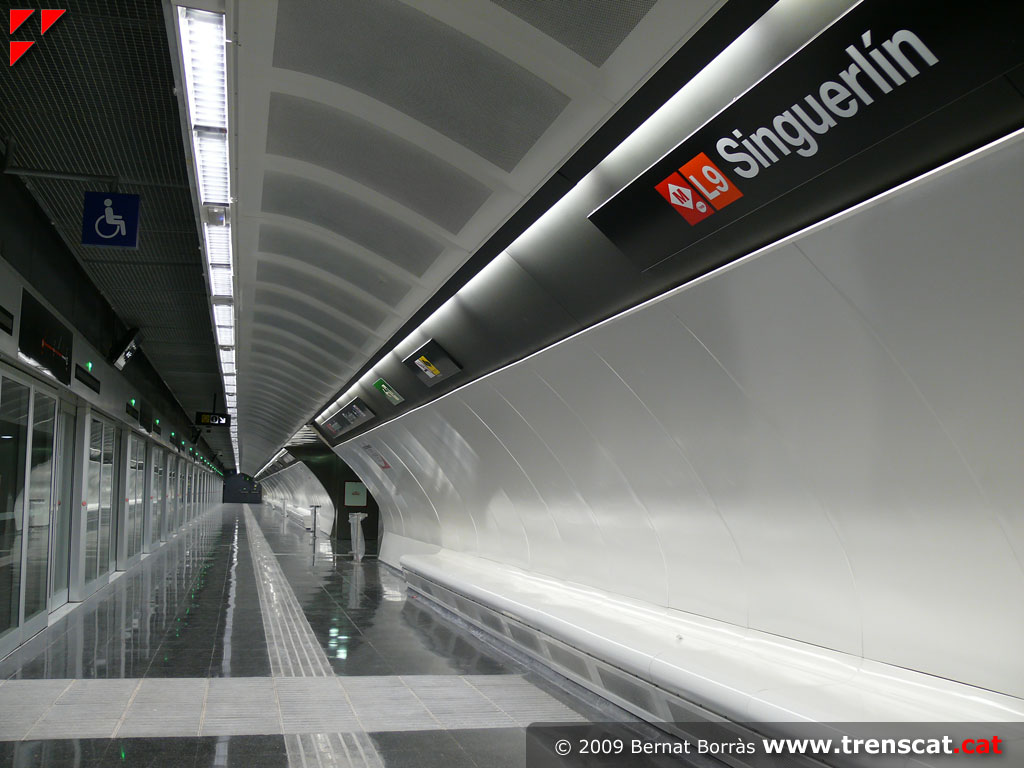Emili Singuerlin i Ros, a prestigious corset-maker born in Barcelona in 1881, always aware of Paris fashion, used to rule his company under the slogan “La família Singuerlin, corseteros hasta el fin” (The Singuerlin family, corset-makers till the end). Despite this, the perpetuation of his surname up to these days has nothing to do with the modelling of the bust, but with the fact that, in 1920, he started a real estate development that would create twelve summer small houses, surrounded by pine forests, meadows and vineyards in Santa Coloma de Gramenet.
Nowadays, tower blocks have taken over those houses, and Singuerlin’s neighbourhood is quiet and populous, fed by the Line 9 tube station named after him. I was there just a few days ago, due to the 2013 architecture festival “48h Open House BCN”, in which Santa Coloma de Gramenet attended as a special guest. I also visited two libraries, a kindergarten, a market, Complex La Pallaresa’s hotel and the Recinte Torribera.
For a few hours then, I become just another tourist in Santa Coloma de Gramenet. Thanks to some very efficient guides, and surrounded by the kind of oriental smiles that crowd Fondo and Singuerlin these days, I entered the top-notch architectural facilities with which this city is aiming to improve its inhabitants’ mobility and cultural, social and educational necessities.
The unconscious tendency we all have to create analogies and comparisons makes me think also in the kind of appeal Tarragona also offers to our cultural inquiring visitors: the modernity of university infrastructures such as Sescelades and Campus Catalunya, the hustle and bustle in Bonavista market, the charming Oliva paths, the wise decision that connected Rambla and Carros and Infants squares by escalators, and a great number of other buildings, streets, spots and corners around the outlying city that are also up with the city centre historical heritage as tourist attractions.
The incredibly good fun visit at Fondo and Singuerlin made me realise of the importance of cultural, historical and landscape tourism which is being pushed by means of the European Parliament’s Resolution on September 27, 2011. One of the precedents for such Resolution is the so-called Agenda for a sustainable and competitive European tourism, on October 19, 2007, COM(2007)0621, which emphasises the importance of culture and education related journeys. The Agenda recommends thematic routes and itineraries to be devised, in order to provide cultural, historical and traditional origins with a certain value, and also to contribute to an alternative tourism development, which should be both sustainable and accessible for everyone. It describes a European tourism that depends on the quality of the tourism experience, and the fact that sustainability in tourist activities are directly related with its competitiveness. It states that tourism can develop new synergies by means of an intensive interaction between environment and society, because the development of new tourist destinations is directly related with their cultural specificities, social interaction and the security and welfare of their population. These characteristics make tourism become a sort of motive force for the subsequent conservation and development of the destinations.
Back in the happy 20’s, the corset-maker Singuerlin was able to spot that pine forests in Santa Coloma de Gramenet were the ideal place in which to create a wealthy middle-class summer colony. In 2013, probably during not so euphoric times, the visit to the facilities in Singuerlin’s neighbourhood provided by the “48h Open House BCN” has taken us to a different Santa Coloma de Gramenet, a current one, full of cultural and human values, from which we can really learn a lot.
Text by Isabel Baixeras Delclòs, lawyer
Translate by Artur Santos (@artur_1983)




